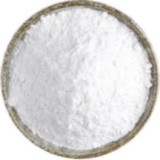 |
Carmellose Calcium or O-carboxymethylated Cellulose Calcium Salt BP Ph Eur Grade or Carboxymethylcellulose Calcium USP Grade Supplier Exporter Manufacturers' Representative |
Email: info@ammol.org |
Call Toll Free +1-855-552-6665 |
Carmellose Calcium or O-carboxymethylated Cellulose Calcium Salt or Carboxymethylcellulose Calcium
CAS Number: 9050-04-8
Molecular Formula: NA
Molecular Weight: NA

Carmellose Calcium or O-carboxymethylated Cellulose Calcium Salt or Carboxymethylcellulose Calcium
Carboxymethylcellulose Calcium USP Grade Specifications:
Cellulose, carboxymethyl ether, calcium salt;
Cellulose carboxymethyl ether calcium salt CAS 9050-04-8
UNII: UTY7PDF93L
DEFINITION
Carboxymethylcellulose Calcium is the calcium salt of a polycarboxymethyl ether of cellulose.
IDENTIFICATION
A. Procedure
Sample solution: Shake thoroughly 0.1 g of Carboxymethylcellulose Calcium with 10 mL of water, followed by 2 mL of 1 N sodium hydroxide, and allow to stand for 10 min. [Note— Save the unused portion of the Sample solution for use in Identification tests B and C.]
Analysis: To 1 mL of the Sample solution add water to make 5 mL. To 1 drop of the resulting solution, add 0.5 mL of chromotropic acid, and heat in a water bath for 10 min.
Acceptance criteria: A red-purple color develops.
B. Procedure
Analysis: Shake 5 mL of the Sample solution prepared in Identification test A with 10 mL of acetone.
Acceptance criteria: A white, flocculent precipitate is formed.
C. Procedure
Analysis: Shake 5 mL of the Sample solution prepared in Identification test A with 1 mL of ferric chloride.
Acceptance criteria: A brown, flocculent precipitate is formed.
D. Identification Tests—General:
Analysis: Ignite 1 g to ash, dissolve the residue in 10 mL of water and 5 mL of 6 N acetic acid, and filter, if necessary. Boil the filtrate, cool, and neutralize with 6 N ammonium hydroxide.
Acceptance criteria: Meets the requirements.
Chloride and Sulfate: To pass the test.
Chloride and Sulfate: To pass the test.
Alkalinity: Shake thoroughly 1.0 g with 50 mL of freshly boiled and cooled water and add 2 drops of phenolphthalein: no red color develops.
Loss on Drying: Dry a sample at 105C for 4 h: it loses NMT 10.0% of its weight.
Carmellose Calcium BP Ph Eur Grade Specifications
Ph Eur --- CAS 9050-04-8
Action and use: Excipient in pharmaceutical products; bulk laxative.
DEFINITION
Calcium salt of a partly O-carboxymethylated cellulose.
CHARACTERS
Appearance: White or yellowish-white powder, hygroscopic after drying.
Solubility: Practically insoluble in acetone, in alcohol and in toluene. It swells with water to form a suspension.
IDENTIFICATION
A. Shake 0.1 g thoroughly with 10 ml of water. Add 2 ml of dilute sodium hydroxide solution and allow to stand for 10 min (solution A). Dilute 1 ml of solution A to 5 ml with water. To 0.05 ml add 0.5 ml of a 0.5 g/l solution of chromotropic acid, sodium salt in a 75 per cent m/m solution of sulphuric acid and heat on a water-bath for 10 min. A reddish-violet colour develops.
B. Shake 5 ml of solution A obtained in identification test A with 10 ml of acetone. A white, flocculent precipitate is produced.
C. Shake 5 ml of solution A obtained in identification test A with 1 ml of ferric chloride solution. A brown, flocculent precipitate is formed.
D. Ignite 1 g and dissolve the residue in a mixture of 5 ml of acetic acid and 10 ml of water. Filter if necessary and boil the filtrate for a few minutes. Cool and neutralise with dilute ammonia. The solution gives reaction of calcium.
TESTS
Solution S: Shake 1.0 g with 50 ml of distilled water, add 5 ml of dilute sodium hydroxide solution and dilute to 100 ml with distilled water.
Alkalinity: Shake 1.0 g thoroughly with 50 ml of carbon dioxide-free water and add 0.05 ml of phenolphthalein solution R . No red colour develops.
Chlorides: Maximum 0.36 per cent.
Sulphates: Maximum 1 per cent.
Heavy metals: Maximum 20 ppm.
Loss on drying: Maximum 10.0 per cent, determined on 1.000 g by drying in an oven at 105C for 4 h.
Sulphated ash: 10.0 per cent to 20.0 per cent, determined on 1.0 g in a platinum crucible.
American Molecules, also known as ammol.org is a distributor, supplier and manufacturers' representative of all types of Pharmaceuticals, Functional Ingredients, Excipients and Specialty Chemicals in Texas USA. Our principals manufacture supply and export USP NF BP, Ph Eur, etc grades of chemicals pure and reagent grade, mineral fortifiers, FCC food grade. Tailor made particle size and customized specifications are offered. The principal's facility is having one or more of the certifications like FDA approval and GLP, cGMP, ISO9001, ISO14001, ISO/IEC 17025, ISO22000, FSSC 22000, ISO45001, FSSAI, Kosher, HALAL, COPP, WHO-GMP certified and Written Confirmation (WC) for export to Europe is available. The manufacturers suppliers and exporters observe WHO Good Manufacturing Practices and Good Laboratory Practices.





Suppliers and Manufacturers' Representative:

9910 Bent Oak Dr
Houston, TX 77040, USA
Call Toll Free: 1-855-55-AMMOL 1-855-552-6665
Email: info@ammol.org